Contents
What is TiWorker.exe?

TiWorker.exe (Windows Modules Installer Worker) is a system process in Microsoft Windows which is responsible for installing new modules and updates. Respectively, it is able to use your CPU and produce a high load on your disk. Usually the CPU usage hovers between 30 and 50% but in some cases TiWorker can load CPU up to 100%. It goes without saying that this will cause bad performance of the system.
So let us find out what to do if you encounter high CPU usage by TiWorker.exe component. Read our tips upon how to fix the high usage of system resources caused by TiWorker.exe process on Windows 10. This guide can also be use to solve the same problem on Windows 8.1 and Server 2016 as well.
Location of TiWorker.exe in Windows 10. Is it a Virus?
To begin with, I hasten to tell you that the TiWorker component is most likely NOT a virus if the .exe file is located in the folder:
C:\Windows\WinSxS\
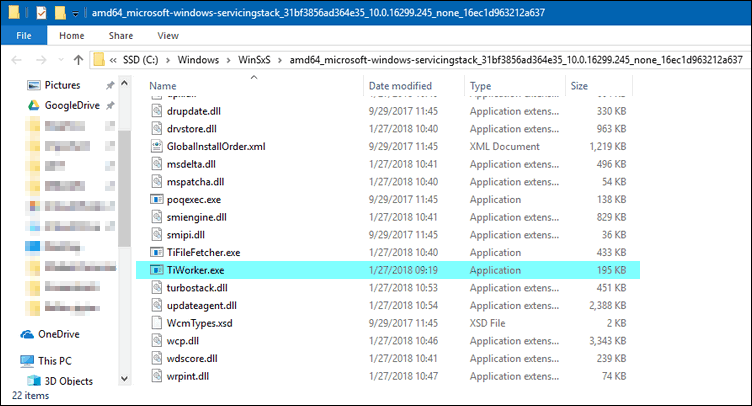
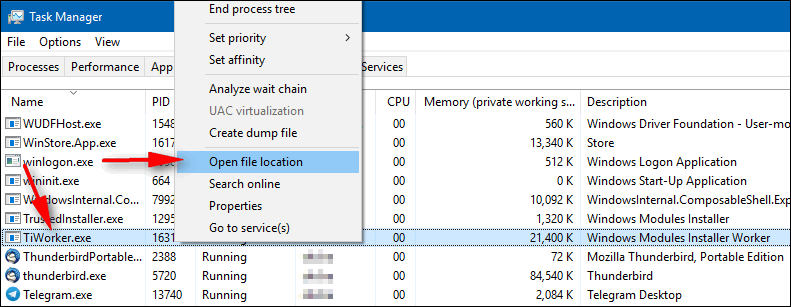
To ensure that the process is not malicious (fake) launch the Last Manager, switch to Details tab, right-click on the process and select Open file location: You will get to directory like this:
C:\Windows\WinSxS\amd64_microsoft-windows-servicingstack_31bf3856ad364e35_10.0.16299.245_none_16ec1d963212a637
However, you should scan your system for malware (read about this below).
How to Fix the Issue of High CPU and Disk Usage by TiWorker.exe in Windows 10
If your friend asks “TiWorker.exe is using up to 50% or 100% of the CPU. What can I do?“, let him follow the tips below to investigate and solve the issue.
Advice 1. Wait for Modules Installer Worker to finish the task
If you notices the problem for the first time, give TiWorker.exe some time to complete its work. Just close all running apps, leave your PC in idle. Wait for an hour and watch for CPU usage. There is a high probability that the process will complete all its tasks and stop loading the central processor unit.
Advice 2. Reboot Your Computer
If you have waited for an hour but TiWorker.exe process is still using your CPU, reboot your system. In many cases it calms down after reboot without any extra actions from user.
Advice 3. Search for Windows 10 updates manually
Perform a manual check for updates as we explained here:
If there are any updates available install them and reboot your system. It should be said that this method helps to stop TiWorker.exe loading the CPU very often.
Advice 4. Clear Updates Cache
- Clear Windows Update Cache.
- Reboot.
- Manually check for updates once again and install updates if any available.
Advice 5. Search for malware and viruses on your PC
If the problem persists there is a possibility of the virus infection. Scan your computer using the best utilities and remove all found malware:
Advice 6 (workaround). Turn off updates for Windows 10
If nothing of the above helps to solve the problem and TiWorker.exe is still loading your CPU heavily here is a radical workaround to bring your PC back to working condition. Probably it will be ecpecially useful for old and weak laptops and desktops. All you need to do is stop and disable two services: Windows Modules Installer (TrustedInstaller) and Windows Update (wuauserv):
- Press Win+R.
- Type services.msc and hit Enter.
- Find Windows Modules Installer (TrustedInstaller) and double click it.
- Select Disabled in Startup type.
- Click Stop.
- Click OK.
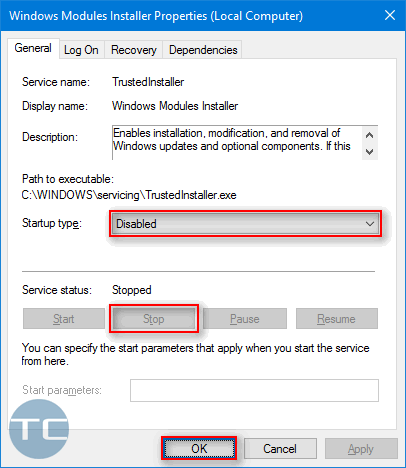
Do the same for Windows Update (wuauserv):
Please, share the guide with your friends if it worked for you. Feel free to ask questions in the comments and provide your own solutions how you managed to fix the problem related to TiWorker (Windows Modules Installer Worker) activity.
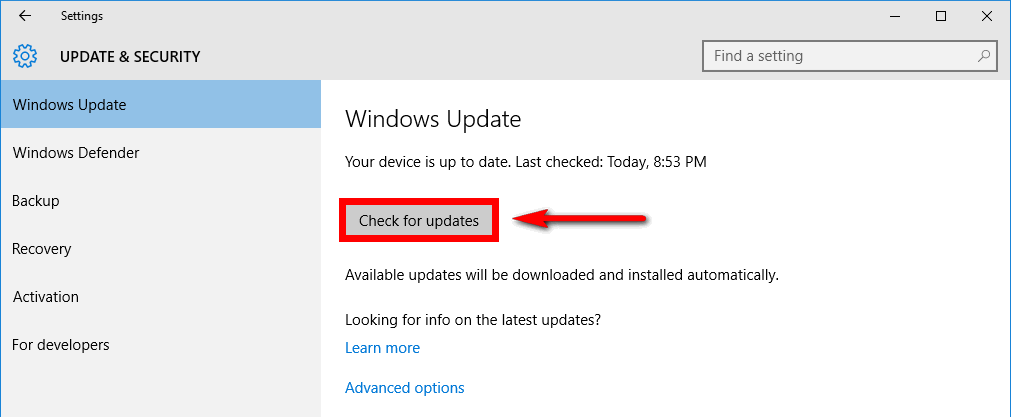
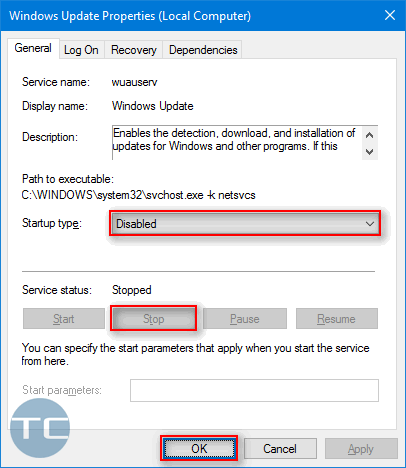
I really thought TiWorker.exe was a virus! Thank you for explanation!
The simple and fastest way
1. open task manager
2. clik performance tab and then go down left corner
3. click “open resource Monitor”
4. find the most paying hi-load application, right click and “SUSPEND”
5. Only SUSPEND Okey …
Hi windows …..
this is one of your failures
go to MACS, they may have one even better
MacOS doesn’t have this blatant user-experience impacting lazy failure of design. You should try it. This high CPU consumption due to Windows updates has been plaguing Windows since version 7. (I’ve been using Windows since version 3.0)
Getting a mac for this reason? LMAO nice joke
The real failure here is not tiworker.exe looking to do updates, because that’s a reasonable requirement, but inflexible OS development people who couldn’t build in some user friendly features like delaying the time when the process runs until X minutes after the PC has started (and presumably other startup related processes have finished) and/or lower the CPU priority so that it is not competing against interactive processes. While it is important to keep the OS up to date, it is generally not critical to do it immediately after reboot and even if that were the case, a little intelligence to the tool could flag it, and the user, to alert for a pending critical update.
Exactly! It’s pure laziness and taking the easy way out at the customer’s expenses. That’s why I try to avoid Windows nowadays and that’s from someone who has been using Windows since the 3.0 days.
I found my workaround. First I tried a malware scan and found some deep in the system. Then I scanned with an antivirus and showed nothing. Then I found something, right click on the C drive and uncheck the indexing option. and it solved the problem for me
This does NOT work as of 27 May 2019. TiWorker.exe appears to go away…but…mysteriously re-enters the picture after about 8 to 10 minutes…
How do we get rid of this POS???